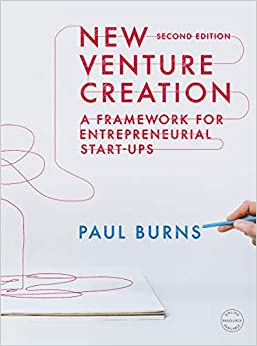Dear Mr/Mrs,
Would you mind help me solve this minicase specificially with formula please, I am very appreciate
MINICASE Terence Breezeway, the CEO of Prairie Home Stores, wondered Prairie Home's value depended not just on its current book what retirement would be like. It was almost 20 years to the day value or earnings but on its future prospects, which were good. One since his uncle Jacob Breezeway, Prairie Home's founder, had financial projection (shown in the top panel of Table 7-8) called asked him to take responsibility for managing the company. Now for growth in earnings of over 100% by 2019. Unfortunately, this it was time to spend more time riding and fishing on the old Lazy plan would require reinvestment of all of Prairie Home's earnings Beta Ranch. from 2013 to 2016. After that the company could resume its nor- Under Mr. Breezeway's leadership Prairie Home had grown mal dividend payout and growth rate. Mr. Breezeway believed this slowly but steadily and was solidly profitable. (Table 7-7 shows plan was feasible. earnings, dividends, and book asset values for the last 5 years.) He was determined to step aside for the next generation of top Most of the company's supermarkets had been modernized and its management. But before retiring, he had to decide whether to rec- brand name was well known. ommend that Prairie Home Stores "go public"-and before that Mr. Breezeway was proud of this record, although he wished decision he had to know what the company was worth. that Prairie Home could have grown more rapidly. He had passed The next morning he rode thoughtfully to work. He left his horse up several opportunities to build new stores in adjacent coun- at the south corral and ambled down the dusty street to Mike Gordon's ties. Prairie Home was still just a family company. Its common Saloon, where Francine Firewater, the company's CFO, was hav- stock was distributed among 15 grandchildren and nephews of ing her usual steak-and-beans breakfast. He asked Ms. Firewater to Jacob Breezeway, most of whom had come to depend on gener- prepare a formal report to Prairie Home stockholders, valuing the ous regular dividends. The commitment to high dividend payout"7 company on the assumption that its shares were publicly traded. had reduced the earnings available for reinvestment and thereby Ms. Firewater asked two questions immediately. First, what constrained growth. should she assume about investment and growth? Mr. Breezeway Mr. Breezeway believed the time had come to take Prairie suggested two valuations, one assuming more rapid expansion Home public. Once its shares were traded in the public market, the (as in the top panel of Table 7-8) and another just projecting past Breezeway descendants who needed (or just wanted) more cash to growth (as in the bottom panel of Table 7-8). spend could sell off part of their holdings. Others with more inter- Second, what rate of return should she use? Mr. Breezeway said est in the business could hold on to their shares and be rewarded by that 15%, Prairie Home's usual return on book equity, sounded right higher future earnings and stock prices. to him, but he referred her to an article in the Journal of Finance But if Prairie Home did go public, what should its shares sell indicating that investors in rural supermarket chains, with risks simi- for? Mr. Breezeway worried that shares would be sold, either by lar to Prairie Home Stores, expected to earn about 11% on average. Breezeway family members or by the company itself, at too low a price. One relative was about to accept a private offer for $200, the current book value per share, but Mr. Breezeway had intervened 17 The company traditionally paid out cash dividends equal to 10% of start- and convinced the would-be seller to wait. of-period book value. See Table 7-7.www.mhhe.com/bmmoe 220 Part Two Value TABLE 7-7 Financial data for Prairie Home Stores, 2008-2012 (figures in millions) 2008 2009 2010 2011 2012 Book value, start of year $62.7 $66.1 $69.0 $73.9 $76.5 Earnings 9.7 9.5 11.8 11.0 11.2 Dividends 6.3 6.6 6.9 7.4 7.7 Retained earnings 3.4 2.9 4.9 2.6 3.5 Book value, end of year 66.1 69.0 73.9 76.5 80.C Notes: 1. Prairie Home Stores has 400,000 common shares. 2. The company's policy is to pay cash dividends equal to 10% of start-of-year book value. TABLE 7-8 Financial projections for Prairie Home Stores, 2013-2018 (figures in millions) 2013 2014 2015 2016 2017 2018 Rapid-Growth Scenario Book value, start of year $80 $ 92 $105.8 $121.7 $139.9 $146.9 Earnings 12 13.8 15.9 18.3 21.0 22.0 Dividends 0 0 0 0 14 14.7 Retained earnings 12 13.8 15.9 18.3 7.0 7.4 Book value, end of year 92 105.8 121.7 139.9 146.9 154.3 Constant-Growth Scenario Book value, start of year $80 $ 84 $88.2 $92.6 $ 97.2 $102.1 Earnings 12 12.6 13.2 13.9 14.6 15.3 Dividends 8 8.4 8.8 9.3 9.7 10.2 Retained earnings 4 4.2 4.4 4.6 4.9 5.1 Book value, end of year 84 88.2 92.6 97.2 102.1 107.2 Notes: 1. Both panels assume earnings equal to 15% of start-of-year book value. This profitability rate is constant. 2. The top panel assumes all earnings are reinvested from 2013 to 2016. In 2017 and later years, two-thirds of earnings are paid out as dividends and one-third reinvested. 3. The bottom panel assumes two-thirds of earnings are paid out as dividends in all years. 4. Columns may not add up because of rounding








